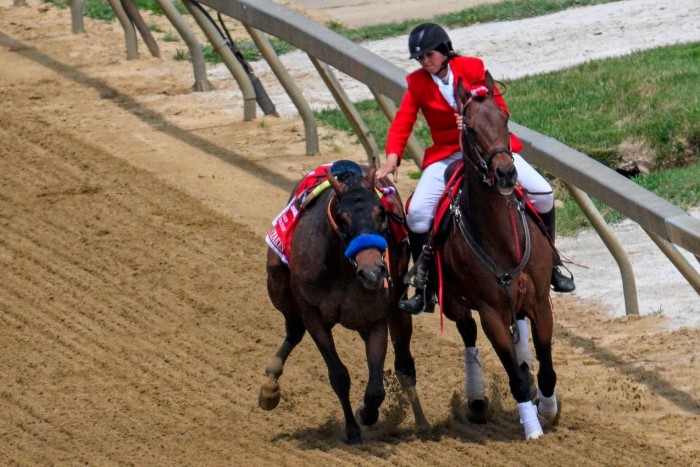The writer is a contributing columnist, based in Chicago
It’s been a rough few decades for American horseracing — and the past few weeks could mark a new low point for the sport of kings.
This should be prime time for the sport: for a magical few weeks in spring and summer, three-year-olds compete in the Triple Crown of thoroughbred racing, starting with the iconic Kentucky Derby.
But the headlines this Triple Crown season — my 60th — have been dominated by death. A dozen horses have died over the past month at Churchill Downs, the Kentucky Derby track, and one horse, Havnameltdown, had to be euthanised on the track — in front of all those fans in tilted hats, and millions more watching on national television — ahead of the Preakness Stakes, the second leg of the Crown.
Lisa Lazarus, chief executive of the new US Horseracing Integrity and Safety Authority says the rate of thoroughbred deaths has fallen since new rules took effect last July: fatalities per 1,000 starts fell from two in 2009 to 1.25 last year, according to the US Jockey Club’s equine injury database. But the new rules didn’t prevent the recent cluster of tragedies. Lazarus encourages me not to jump to conclusions about what caused any of these deaths, which are being investigated. Havnameltdown, for example, was bumped by another horse at the race’s start.
Peta, the animal cruelty organisation, says this could be a turning point for racing in America. The sport “has never been closer to having its ‘social licence’ revoked”, Kathy Guillermo, Peta’s senior vice-president for equine matters, told me. She predicts that any catastrophic injury close to the final leg of the Triple Crown, the Belmont Stakes on June 10, could prove “the death knell for the industry”.

That would break my heart: I’ve been horsey all my life, with multiple fractures to prove it, including a concussion in my 60th year from being bucked off an angry pony in the Mongolian desert. But even I have begun to doubt whether thoroughbred racing will survive my generation.
The most famous races are hugely popular: 14.8mn people watched this year’s Kentucky Derby, making it the most-watched sporting event since the Super Bowl. But that masks a decline in racing as part of the fabric of American life: races fell from a peak of 74,071 in 1989 to 33,453 last year.
David McCaffrey, executive director of the Illinois Thoroughbred Horsemen’s Association, which represents owners and trainers, says the best he can hope for is that American racing has now hit “rock bottom”, and will rebound if it can be significantly subsidised by revenue from “racinos” (casino-like gambling facilities at racetracks).
The fan demographics aren’t helping. I asked my twentysomething kids to give me $20 and take me to the races as a Mother’s Day treat this year. We went to the only track with live racing near our Chicago home, but the atmosphere inside Hawthorne Race Course was like a sad outing for the senior social club rather than a fun day at the track. Hawthorne demolished its grandstand for a “racino” that hasn’t been built, but that meant it was hard even to see the race we bet on, without going indoors to watch it on television. I chose the right horses to win and place, and pocketed $9.41 on a $2 bet, but none of us wanted to hang around to gamble the rest of my $20. I tried to pique the youngsters’ interest by suggesting an app that uses artificial intelligence to place bets, but they weren’t seduced and hustled me out for tacos instead.
For decades, racetrack betting was the only legal way to gamble in many areas. Today there are infinite sports betting and casino options. I can see one bright spot: crowdsourcing racehorse ownership. Some 382 investors bought a stake in Mage, the Kentucky Derby winner, through the Commonwealth sports investment app — thoroughbred ownership goes for as little as $50. Commonwealth’s users more than doubled after the Derby, co-founder and chief executive Brian Doxtator told me, adding that users’ average age is 36. Apparently, they aren’t ready to let horseracing go to the dogs just yet: greyhound racing in the US is all but extinct, for many of the same reasons.
Here’s hoping for a safe final leg of the Triple Crown — one more tragic headline could signal the end of days for one of America’s oldest sports.






